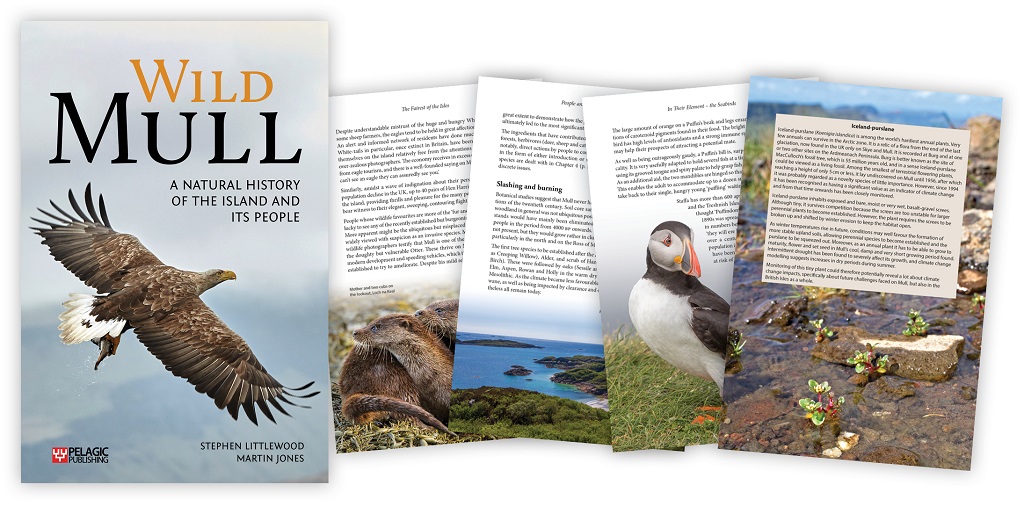If you are the sort of person who normally shies away from guidebooks, I would go as far as guaranteeing that you should reconsider for Wild Mull: A Natural History of the Isle of Mull and its People.
Written by Stephen Littlewood, with photography from Martin Jones, this book is both a celebration of the ‘wildness, diversity, and wonder’ of Mull, and a rallying cry to think more deeply about the relationship humans have with the natural world.
The authors have sought to give ‘an honest appraisal’ of Mull’s ecosystem. Subjects range from the geological origins of the island and the understory of the Celtic rainforest, to the alpine flora of mountain scree and the now-famous white-tailed eagles – and everything in between.
Wild Mull does not buy into the narrative of ‘untouched wilderness’ that still tends to sneak into perspectives on Highland landscapes. The wild elements of Mull’s ecosystem do not exist alone: the authors include mention of cattle and sheep, the flowers in our gardens, and even the domestic cat.
The breadth of the range is impressive in what is a relatively short book; each detail combines to make a compelling whole. That said, if you found you were less interested in fungi you could skim past a section without detracting from the overall enjoyment and discussion of the book.
Woven throughout is Mull’s human story and its links to the island’s biodiversity. This is a nature book that does not pretend that humans are separate.

The authors choose largely to neither condemn nor praise those interactions, simply presenting the facts of human interaction with the landscape and its resulting effect on biodiversity. In the case study of conifer plantations, they note the negative impact on peat bogs, alongside the positive impact on goldcrest and siskins. Similarly, pine martens present a paradox: a protected species that is having a negative impact on a number of bird species on the island. The reader is given the facts and the space to make up their own mind.
Every element is given the same attention and balanced approach that clearly stems from a deep love of Mull and its surrounding environment.
The images from the island are something special. Some are breathtaking, such as the aerial courtship dance of a white-tailed eagle pair. Others are humorous or just lovely, like the upside-down common tern divebombing the water at Croig, or the pebbles in St Columba’s Bay on Iona, bright as the window of a sweetshop. You get a sense of the joy the authors had in capturing the life and detail in the landscape.
Ultimately though, Wild Mull conveys the importance of understanding ecosystems such as Mulls’, and that nothing in nature exists alone. Just as it shows the midge connected to the mountain, so too it highlights that Mull is connected to the global ecosystem. As the authors put it, ‘no island is an island’.
Wild Mull: A Natural History of the Isle of Mull and its People, by Stephen Littlewood and Martin Jones, published by Pelagic Publishing, £25.
[review rating=”5″ align = “left”]
TAGS

